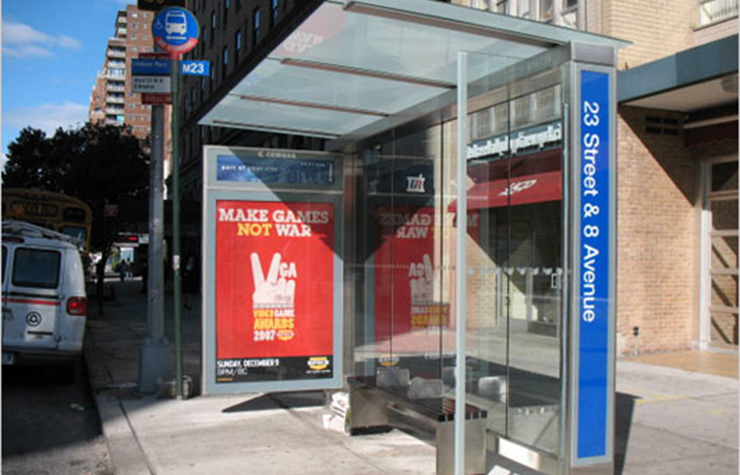Better Benches and Bus Stop Shelters
Waiting still isn't fun, but now it's much more comfortable
Citybench And Bus Shelter Program, New York, New York, United States
Over the past decade, New York City’s programs to improve its sidewalk benches and bus stop shelters have transformed the experience of waiting by providing 1,500 new benches along with 3,500 new or improved shelters.
The Details
Bus stop benches that are attractive and comfortable encourage ridership and have the added benefit of providing a resting place for pedestrians. Starting in 2012, New York City’s Department of Transportation (DOT) undertook a high profile search for bus stops that needed new or improved benches, emphasizing locations where older riders were likely to board.
Senior centers throughout the city suggested places where a bench would be useful and the DOT studied other areas with a high concentration of older people, such as neighborhoods where many are aging in place. The department also flagged locations within a quarter-mile from a hospital, community health center or municipal facility. In addition, the city provided a simple online form for residents to request and recommend bench locations.
In redesigning the basic bench, planners asked, “What makes a bench age-friendly?” For one thing, the bench must fit a variety of body shapes; for another, the armrest needs to be designed and placed in a way that helps a person to sit and stand up again.
The program to improve shelters has been active since 2006. As with the benches, the location of new or improved shelters resulted from a citywide call for community input. In order for the shelters to serve everyone, their design takes into account mobility issues, such as the need for a wide-enough entry and exit to accommodate people using wheelchairs.
The Costs
For the benches, a Bus Livability Grant from the Federal Transit Administration funds 80 percent of the $2.4 million cost. The New York City DOT covers the remaining expenses (approximately $600,000 so far) to install and maintain the benches.

Photo courtesy New York City Department of Transportation
A bench and bus shelter 23rd Street and 8th Avenue in Manhattan.
For the bus shelters, a creative private-public partnership has funded the entire bill. In exchange for being able to sell advertising space on each bus shelter, Cemusa, a Spanish company with its North American headquarters in Manhattan, replaced the existing bus shelters and installed new ones, all at no cost to the city. Cemusa also pays a fee to the city for the right to advertise and the company covers maintenance and repair costs.
The Results
More than one-third of New York City's bus stops now sport new or improved shelters, shielding passengers from wind, rain and snow. Bus passengers (and others who may need to catch their breath during a long walk) can also use the new benches.
Nick Peterson, a project manager for DOT, sums up the bench program with this thought: "Yes, we target mobility impaired and older New Yorkers through the CityBench Program, but these benches are good for everybody. They make the city a richer place."
Michelle Craven, another executive with the department, points to the added visibility that a shelter gives to the bus stops and says, "Providing shelters and benches for waiting passengers greatly improves the transportation experience of all bus riders and pedestrians."
Related Resources
- Age-Friendly NYC: 59 Initiatives,
- New York Academy of Medicine: Age-Friendly NYC
- New York City, Department of Transportation: CityBench
- New York City, Department of Transportation: Coordinated Street Furniture
- New York City Department of Transportation: Request a Bench
- Cemusa Bus Shelters
- AARP Livability Index: New York City
- AARP Network of Age-Friendly Communities
- AARP New York
Published August 2015
Stay Informed — For Free!
Featured Video
Learn how to check the "livability score" of any address in the U.S.
AARP.org/Livable
Enter a topic, name, place, etc.




